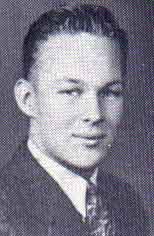Pvt. Albert Joseph Maczulaitis
Born: 15 April 1925 – Melrose Park, Illinois
Parents: Joseph Maczulaitis & Vincenta Samarakas-Maczulaitis
Siblings: 1 brother
Home:
– 1515 North Sixteenth Avenue – Melrose Park, Illinois
Education:
– Proviso Township High School
– Class of 1943
Selective Service Registration: 15 April 1943
Contact Person: Vincenta Maczulaitis
– registered while a senior in high school
Enlisted:
– 28 June 1943
Serial Number: 36753628
Training:
– Camp Callan, California
– trained there for nearly two years
– anti-aircraft unit – Ontario, California
– Camp Bowie, Texas
Unit:
– 83rd Armored Reconnaissance Battalion, 3rd Armored Division
Engagements:
– D-Day Invasion – 6 June 1944
– hedgerow fighting
– Falaise Gap
– ordered to close the gap to trap German 7th Army
– Rhineland – 7 February 1945
– Cologne, Germany – March 1945
– Dora-Mittelbau Concentration Camp – 11 April 1945
Killed in Action:
– 15 April 1945
– shot by sniper
– died on his twentieth birthday
Buried:
– US Military Cemetery #1 – Bruna, Germany
Reburied:
– November 1948
– Mount Carmel Catholic Cemetery, Hillside, Illinois
Medals:
– Purple Heart



